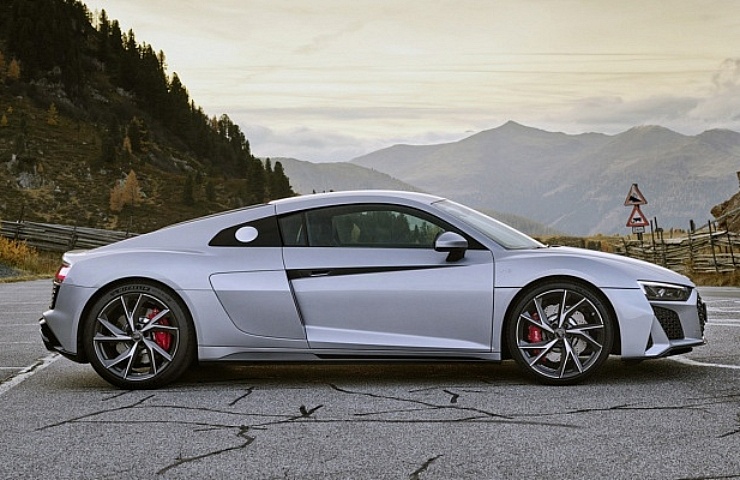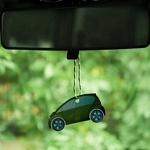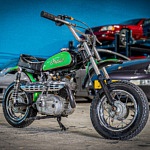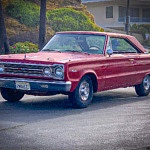The double clutch (or dual-clutch transmission) is seen in cutting-edge supercars like the Bugatti Veyron, Mercedes-AMG CLA 45, and Porsche 911 Carrera. The mid-engined, 562-horsepower Audi R8 (shown above) is yet another exotic car with DCT. It can reach 201 mph, thanks in part to a DCT and seven-speed S Tronic unit that can shift gears in 120 milliseconds. Reviewers noted “neck-snapping acceleration followed by an almost immediate upshift to a higher gear.”
Double clutch technology was invented circa 1939 by French engineer Adolphe Kégresse for the innovative front-wheel-drive Citroën Traction Avant. It was a definite advance because there’s practically no downtime. The next gear has been preselected by the other clutch, so it’s ready to go as soon as the transmission shifts. “Shifts are incredibly fast—milliseconds,” says Greg Packham, owner of an Alfa-Romeo 4C, another supercar with a DCT. Still, Packham and other owners have had to learn how to drive a DCT. It’s a bit different.
What Not to Do with Your DCT Car
Holding down the brake while revving the engine will hurt a dual-clutch unit. Also not recommended for DCT cars: taking your foot off the brake or putting the car in neutral at stoplights. Without the brakes applied, some DCTs will slip their clutches trying to keep you in place. And switching out of drive is just plain unnecessary.
The DCT was developed for road cars around the same time as the automatic transmission itself. The first mass-market auto was the General Motors Hydra-Matic of 1939. So it could have become the standard long ago, but instead, the technology lay mostly dormant for a couple of decades.
Two Manual Gearboxes in a Single Case
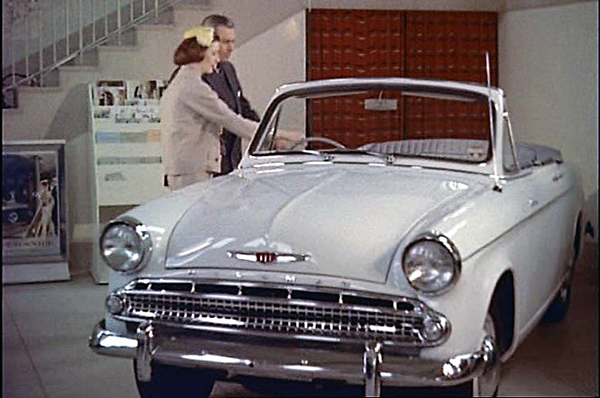
The first production car with a DCT was the humble Hillman Minx.
The first production car with a dual clutch transmission was the humble Hillman Minx. It was billed as “Easidrive” on the 1959-introduced Series III Hillman Minx sedan, convertible, and station wagon. The Minx’s DCT was highly unorthodox (using magnetic powder couplings with solenoids and primitive electronics).
The modern DCT is computer-controlled and highly efficient. Essentially, it’s like having a single case with two manual gearboxes—one clutch in the DCT handles even gears (located on one input shaft) and the other odd (the other input shaft). The outer shaft is hollow, and the inner shaft sits inside it. No torque converter is necessary. It’s replaced in most applications by concentric clutch packs.
Efficiency is key, and it’s why automakers are also adding extra gears to their automatics. It’s estimated that a six-speed DCT is 10 percent more fuel-efficient than a standard five-speed auto.
DCT was revived for racing, beginning in the 1970s. There were distinct advantages to having transmissions that shifted faster. Porsche called it “Doppelkupplungsgetriebe” in 1983 when it went into a prototype, and then the 956 Le Mans racer that won the World Sportscar Championship in 1986.
DCTs Come to the Mass Market
Cars with the double-clutch transmissions won races, but it was still nearly 20 years before the tech reached the mass market in the 2003 VW Golf R32, a little rocket ship with a 237-horsepower V-6. VW was learning from the company’s racing experience. So why didn’t the Car and Driver review mention this major technical milestone? Because the U.S.-market cars got manuals; only Europeans enjoyed the DCT.
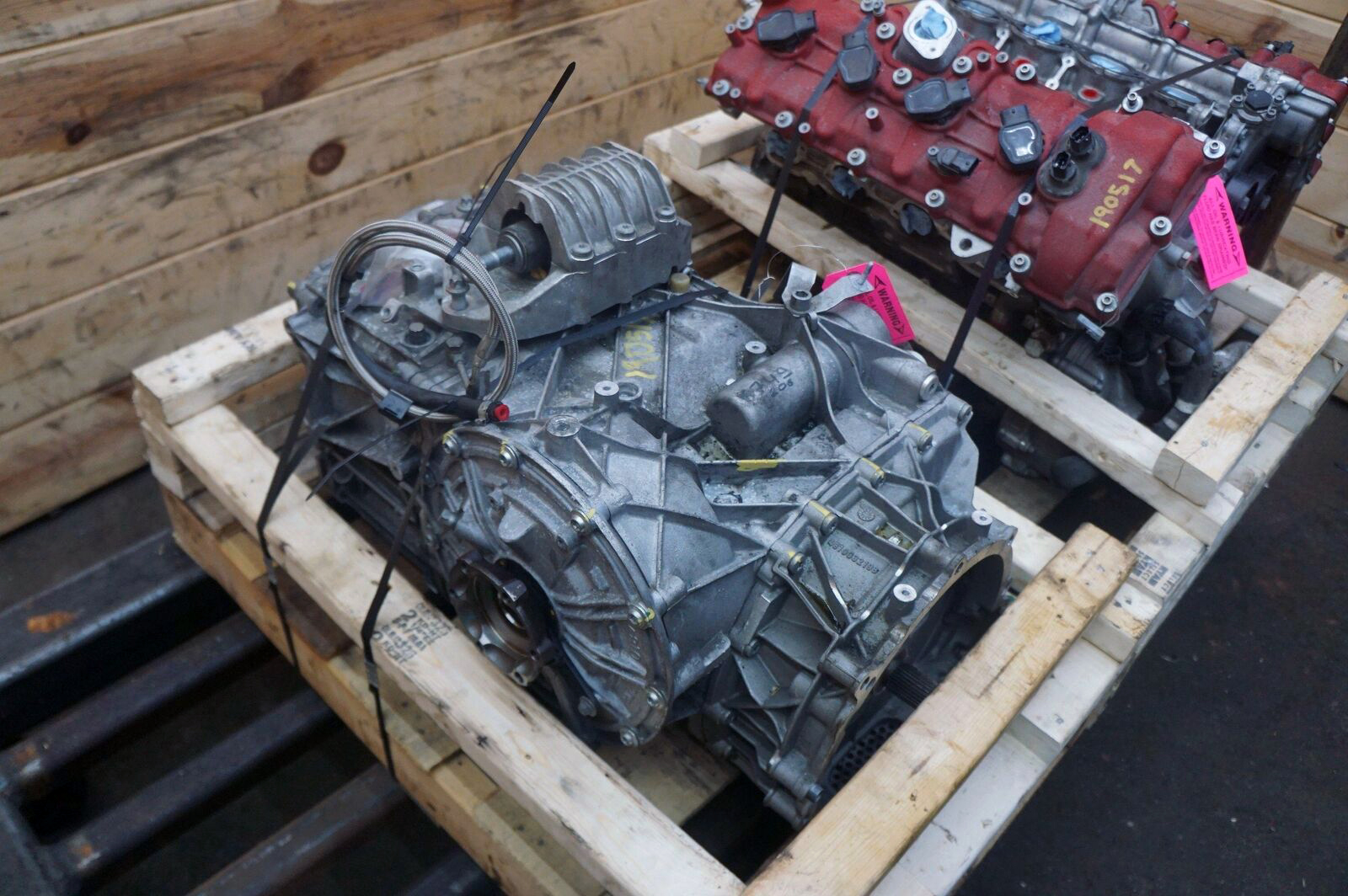
This Getrag unit for the Ferrari 458 is available on eBay.
DCTs are getting cheaper and thus affordable to install in less-expensive cars because there’s plenty of competition. Getrag, BorgWarner, LuK, Ricardo, ZF, and Tremec all make DCTs now. eBay supplies used DCTs such as the seven-speed unit for the 2009 BMW M3, as well as the seven-speed Getrag for the Ferrari 458.
Don’t be surprised if your car has a dual clutch system. Can you hardly tell when it shifts gears? That’s a sign that DCT technology lurks nearby. Here are a few examples.
- VW’s Golf R and Jetta GLI both have DCTs. In the 288-horsepower 2019 Golf, it’s coupled with 4Motion AWD and stop-start, and in the 2020 Jetta, it’s a seven-speed alternative to the six-speed manual.
- The acclaimed Hyundai Veloster Turbo is available with a DCT, although not in the top-of-the-line R-Spec model. But the 2021 Veloster Turbo Ultimate DCT is still plenty quick, reaching 60 mph in 5.9 seconds.
- The fearsome 565-horsepower twin-turbo Nissan GT-R got new turbochargers for 2020. The premium version uses a six-speed DCT with an “R” mode for aggressive driving. The transmission also has adaptive shift control, contouring to the owner’s driving style.
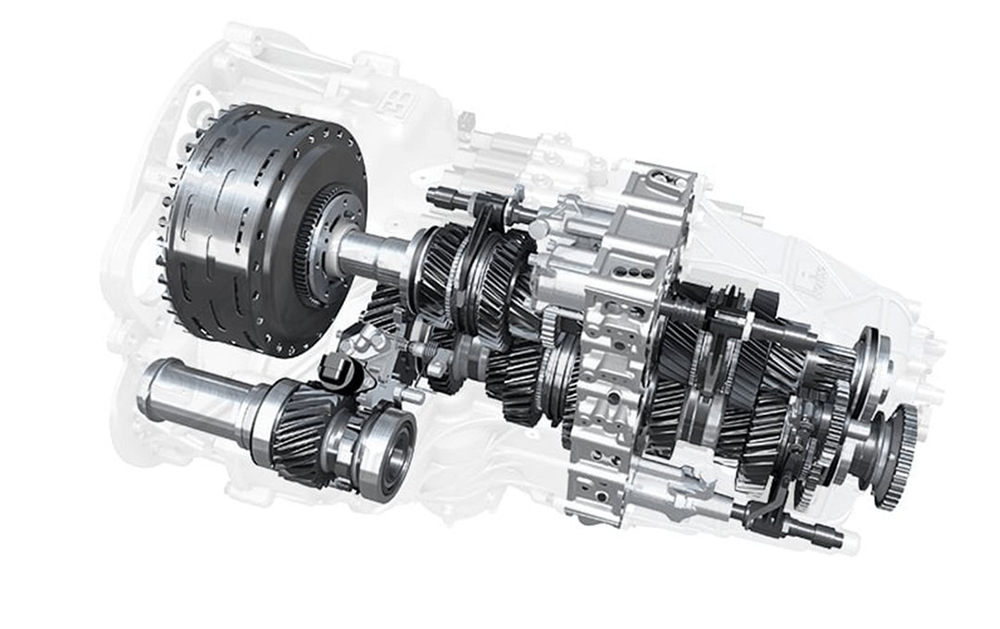
The complex DCT in the Bugatti Veyron.
On the Bugatti Veyron, the seven-speed DCT was developed by Ricardo. It sits longitudinally ahead of the mid-mounted 16-cylinder engine, a monster that produces 1,001-horsepower.

